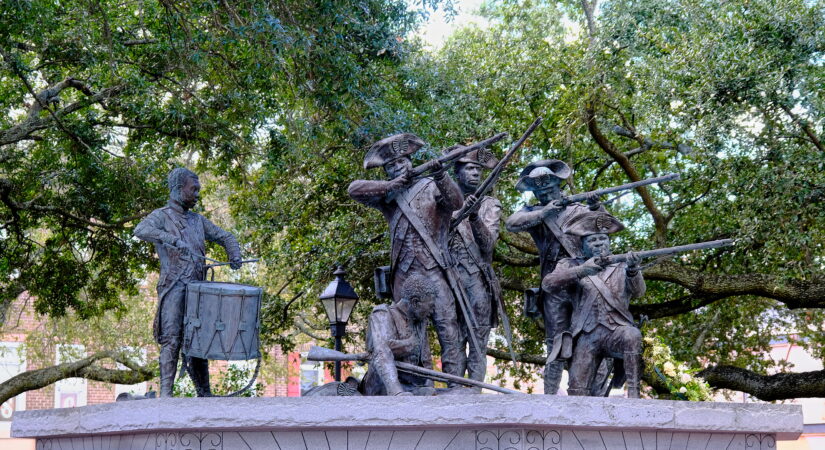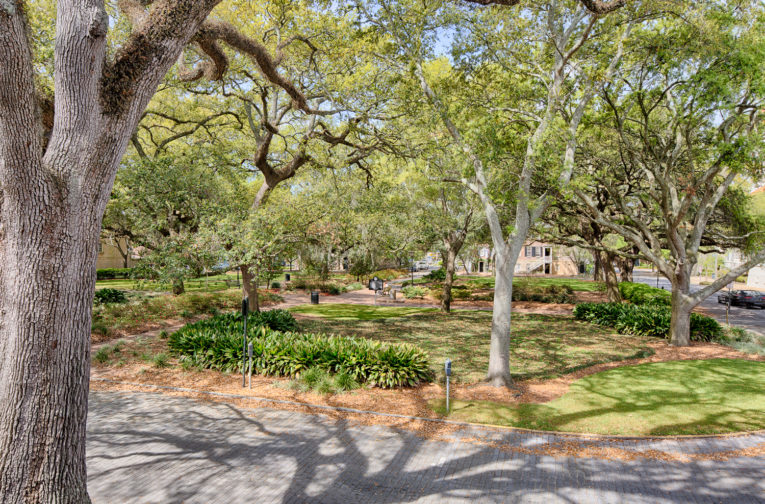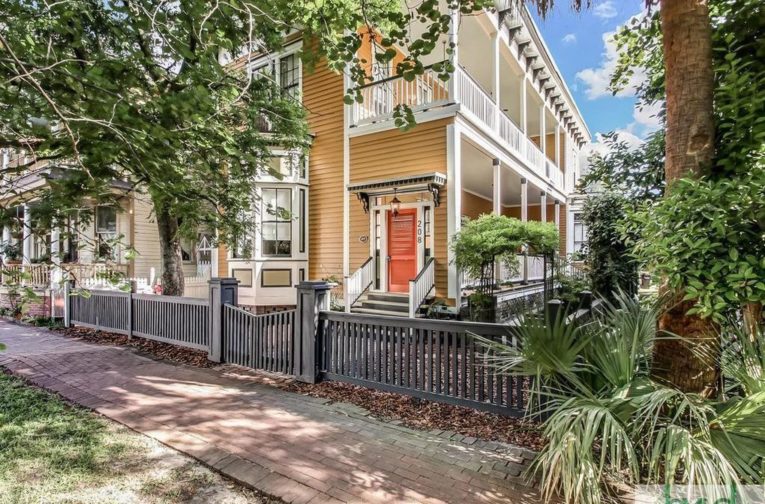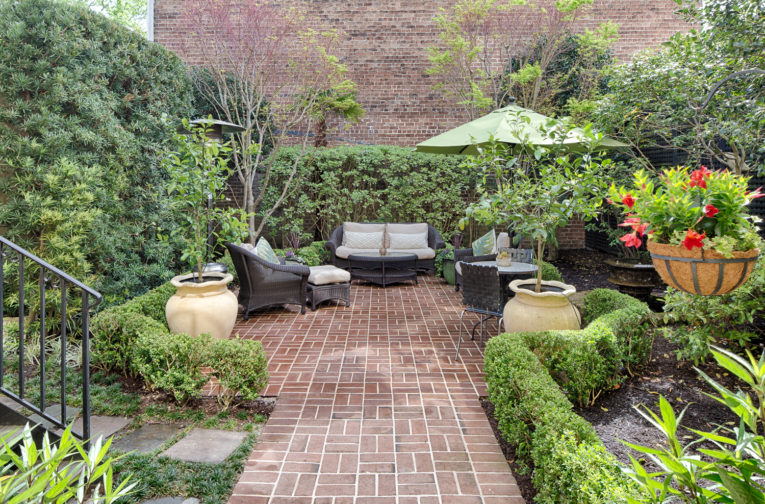Situated at the west end of City Market, Franklin Square anchors the northwest corner of Savannah’s iconic city plan and boasts some of the city’s most vital history.
One of six “new” squares added to Savannah’s urban plan in the 1790s, Franklin Square is named after America’s founding father Benjamin Franklin. In addition to his many contributions to U.S. history, Franklin also served as agent for the colony of Georgia prior to American independence from England. Franklin died in 1790, the same year Franklin Square was laid out, and the square was named in his memory the following year.
Unique character
Beginning in the 1850s, Franklin Square became known colloquially as the “Water Tank Square” or the “Reservoir Square” to generations of Savannahians because of the enormous 40-foot-tall water reservoir that once dominated its center. Serving as the original waterworks for the city of Savannah, the tank contained essential drinking water transported from the Savannah-Ogeechee Canal to local residences, resulting in the first running water in Savannah. The tank was ultimately removed at the turn of the 20th century.
Today, the Haitian Memorial – which was officially unveiled in 2007 – dominates the center of the square. This stunning work of public art by sculptor James Mastin honors the memory of Black volunteers from Saint-Domingue, Haiti, who fought for freedom during the siege of Savannah in 1779.
The oldest building still standing on Franklin Square is the Abraham Minis House, better known to generations of Savannahians as the beloved home of Vinnie Van GoGo’s pizzeria. Dating from 1846, the building houses one of the most notable businesses in bustling City Market and one of its original anchor tenants after City Market’s redevelopment in the early 1990s. City Market features dozens of popular shops, restaurants, bars and boutiques that appeal to visitors as well as local residents year-round.
Franklin Square is also notable in Savannah history for being one of only two restored squares that had previously been destroyed or covered over. In 1935, the routing of U.S. Highway 17 onto Montgomery Street effectively eliminated the square entirely. However, in the mid-1980s, the square was restored. Today, it joins Ellis Square – which marks City Market’s eastern boundary – as one of two “lost” Savannah squares that have been regained over the years.
Historic landmark
Franklin Square is extremely important to local African-American history for several reasons. First African Baptist Church, which is the most historically important building on the square, occupies the square’s northwest corner. Home to, what many historians call, North America’s oldest continuous Black congregation, the current building on the site dates from 1861. However, the First African Baptist congregation predates the United States itself, and was originally founded by Rev. George Leile in 1773.
Under the leadership of a later pastor, Rev. Andrew C. Marshall, the church hosted the first Black Sunday School in North America. First African Baptist also played an important role in Emancipation as one of the stops on the Underground Railroad, which ferried slaves to freedom in the 19th century. Holes in the sanctuary floor are said to have provided breathing air for escaped enslaved people.
The Ralph Mark Gilbert Civil Rights Museum on MLK Jr. Boulevard is named for another First African Baptist pastor. Gilbert earned respect as a key figure in the U.S. Civil Rights movement, serving as president of the Savannah branch of the NAACP in the 1940s and 1950s.
A number of residential homes and condominiums are conveniently located within walking distance of Franklin Square in downtown Savannah. When buying and selling real estate in Savannah’s National Historic Landmark District, it’s important to seek professional guidance from a professional who is familiar with the city’s rich history as well as local real estate market trends.






